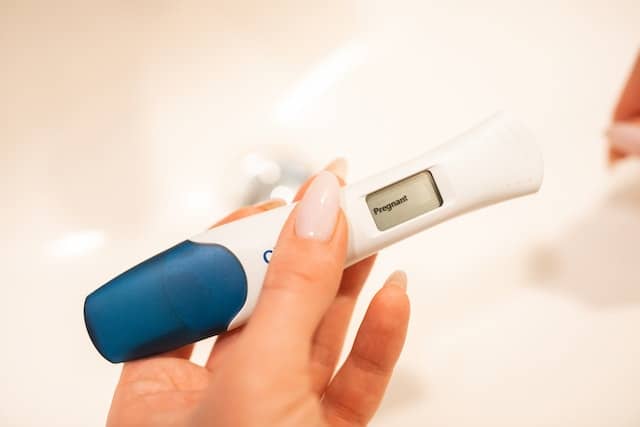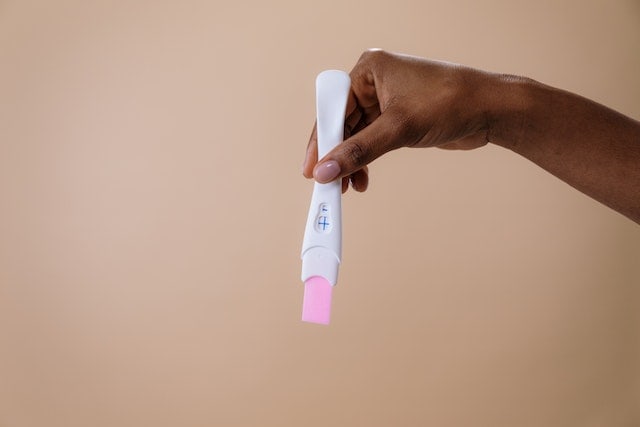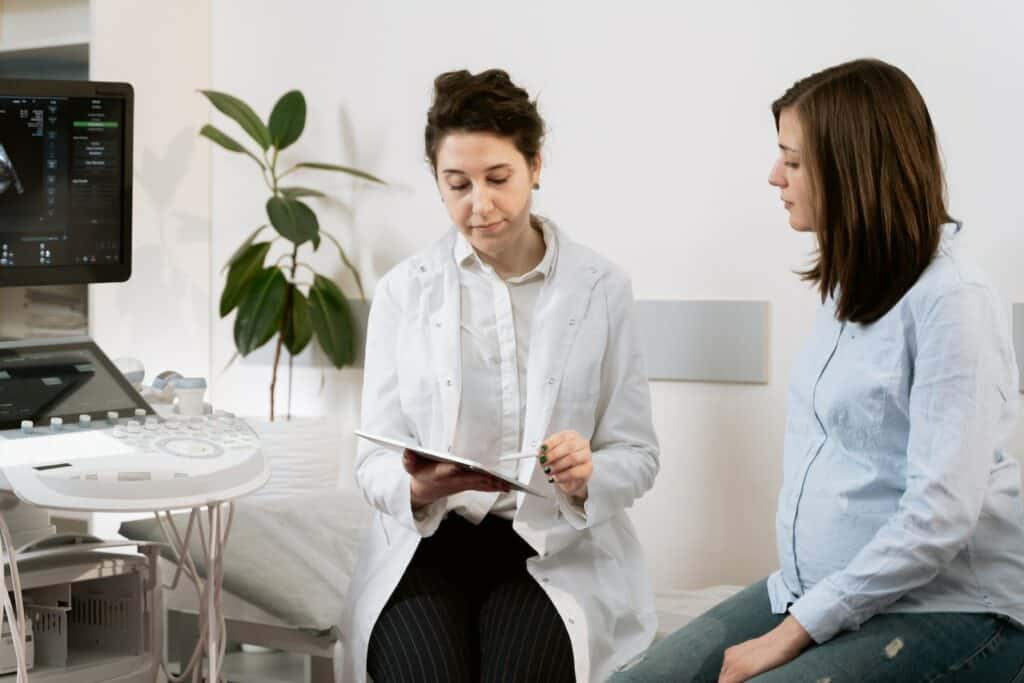Dye stealer pregnancy tests have been gaining popularity among women who are trying to conceive. These tests are designed to detect the presence of the human chorionic gonadotropin (HCG) hormone, which is produced by the placenta after a fertilized egg implants in the uterus.
However, in some cases, these tests can produce misleading results, particularly in the case of twin pregnancies.
Dye stealer pregnancy tests work by detecting the HCG hormone in a woman’s urine. The test works by using a dye that reacts with the hormone, producing a positive or negative result. The dye in the test line is designed to be lighter than the control line, indicating a positive result.
However, in the case of a dye stealer test, the test line is darker than the control line, indicating a higher level of HCG in the urine.
Significance of HCG Levels
HCG levels are an important indicator of pregnancy, as they can help determine the viability of the pregnancy. Low HCG levels can indicate a possible miscarriage, while high HCG levels can indicate a multiple pregnancy.
In the case of a dye stealer pregnancy test, a darker test line can indicate a higher level of HCG, which can be a sign of a twin pregnancy. However, it is important to note that a dye stealer test is not a definitive indicator of a twin pregnancy, and other factors, such as the woman’s age and medical history, should also be taken into account.
Key Takeaways
- Dye stealer pregnancy tests can produce misleading results in the case of twin pregnancies.
- HCG levels are an important indicator of pregnancy and can help determine the viability of the pregnancy.
- A darker test line on a dye stealer test can indicate a higher level of HCG, which can be a sign of a twin pregnancy, but other factors should also be taken into account.
Understanding Dye Stealer Pregnancy Test

A dye stealer pregnancy test is a type of home pregnancy test that indicates a very high level of hCG hormone in the body. The test works by detecting the presence of the hCG hormone, which is produced by the placenta after fertilization. In most cases, a dye stealer pregnancy test is an indication of a twin pregnancy.
A dye stealer test is called so because it “steals” the dye from the control line, making it appear lighter than the test line. This is because the test line is darker due to the high concentration of hCG hormone in the urine.
It’s important to note that not all women will experience a dye stealer pregnancy test, even if they are carrying twins. The test result is dependent on the level of hCG hormone in the body, which can vary from woman to woman.
It’s also important to note that a dye stealer pregnancy test does not necessarily mean that a woman is carrying twins. While it’s more common in twin pregnancies, it can also occur in singleton pregnancies with high levels of hCG hormone.
If a woman suspects that she may be pregnant with twins, it’s important to confirm the diagnosis with an ultrasound. This will provide a more accurate indication of whether or not she is carrying twins.
In summary, a dye stealer pregnancy test is a type of home pregnancy test that indicates a high level of hCG hormone in the body. While it’s more common in twin pregnancies, it can also occur in singleton pregnancies with high levels of hCG hormone. It’s important to confirm the diagnosis with an ultrasound.
Significance of HCG Levels
Human chorionic gonadotropin (HCG) is a hormone produced during pregnancy. The level of HCG in a woman’s body can indicate whether she is pregnant or not. In general, the HCG level doubles every 48-72 hours during the first few weeks of pregnancy.
For women who have taken a dye stealer pregnancy test, elevated HCG levels can indicate the possibility of twins. This is because twins produce more HCG than a single pregnancy. However, it is important to note that elevated HCG levels do not always mean that a woman is carrying twins.
High HCG levels can also be a sign of other conditions, such as a molar pregnancy or an ectopic pregnancy. A molar pregnancy occurs when a fertilized egg develops into a tumor instead of a fetus.
An ectopic pregnancy occurs when the fertilized egg implants outside of the uterus, usually in the fallopian tube. Both of these conditions require medical attention and can be life-threatening if left untreated.
It is important to note that HCG levels can vary from woman to woman and even from pregnancy to pregnancy. Some women may have higher HCG levels than others, and some pregnancies may produce more HCG than others.
Therefore, it is important to consult with a healthcare provider to determine the significance of HCG levels in each individual case.
In summary, elevated HCG levels can be a sign of twins in women who have taken a dye stealer pregnancy test. However, high HCG levels can also indicate other conditions that require medical attention.
It is important to consult with a healthcare provider to determine the significance of HCG levels in each individual case.
Interpreting Test Lines

When interpreting a pregnancy test, it is important to understand the meaning of the control line and the test line. The control line is a built-in feature of the test that indicates whether the test is working properly. The test line, on the other hand, detects the presence of the pregnancy hormone hCG in the urine.
A positive result is indicated when the test line is as dark or darker than the control line. However, in the case of a dye stealer pregnancy test, the test line may appear lighter than the control line, even though the woman is pregnant with twins.
A dye stealer result occurs when the pregnancy hormone hCG is so high that it saturates the test and causes the test line to appear lighter than the control line. This can happen in the case of a twin pregnancy, where the levels of hCG are higher than in a singleton pregnancy.
It is important to note that a dye stealer result does not necessarily mean that a woman is pregnant with twins. It simply means that the levels of hCG are high enough to saturate the test and cause the test line to appear lighter than the control line.
In summary, when interpreting a pregnancy test, it is important to pay close attention to the control line and the test line. A positive result is indicated when the test line is as dark or darker than the control line.
However, in the case of a dye stealer pregnancy test, the test line may appear lighter than the control line, even though the woman is pregnant with twins.
Dye Stealer Test and Twin Pregnancy
A dye stealer test is a type of pregnancy test that occurs when the test line on a pregnancy test becomes lighter than the control line. This happens because the test is detecting a very high level of human chorionic gonadotropin (hCG) in the urine, which is a hormone that is produced during pregnancy.
In the case of twin pregnancy, the levels of hCG in the urine are usually higher than in a singleton pregnancy. This means that a dye stealer test is more likely to occur in a twin pregnancy than in a singleton pregnancy.
However, it is important to note that not all twin pregnancies will result in a dye stealer test, and not all dye stealer tests indicate a twin pregnancy.
A positive pregnancy test is the first step in confirming a pregnancy, and a dye stealer test can provide additional information about the pregnancy. If a woman suspects that she may be pregnant with twins, a dye stealer test can be a useful tool to confirm this suspicion.
However, it is important to follow up with a healthcare provider to confirm the pregnancy and determine the number of fetuses.
In summary, a dye stealer test can occur in a twin pregnancy due to the higher levels of hCG in the urine. However, not all twin pregnancies will result in a dye stealer test, and not all dye stealer tests indicate a twin pregnancy.
It is important to confirm the pregnancy and the number of fetuses with a healthcare provider.
Symptoms and Signs of Pregnancy

When a woman is pregnant, her body undergoes various changes that can be both physical and emotional. Some women may experience all the symptoms of pregnancy, while others may not experience any.
Below are some common symptoms and signs of pregnancy.
1. Pregnancy Symptoms
One of the most common symptoms of pregnancy is fatigue. This is due to the increased levels of progesterone in the body, which can make a woman feel tired and sleepy. Other common symptoms of pregnancy include:
- Nausea and vomiting (morning sickness)
- Breast tenderness and swelling
- Frequent urination
- Mood swings
- Food cravings and aversions
- Constipation
- Headaches
- Back pain
- Dizziness
2. Morning Sickness
Morning sickness is a common symptom of pregnancy, affecting up to 80% of pregnant women. It is characterized by nausea and vomiting, usually in the morning but can occur at any time of the day.
Morning sickness is caused by the increased levels of hormones in the body, particularly human chorionic gonadotropin (hCG). While morning sickness can be uncomfortable, it is usually not harmful to the baby.
3. Missed Period
A missed period is often the first sign of pregnancy. However, some women may experience spotting or light bleeding during the early stages of pregnancy, which can be mistaken for a period.
If a woman misses a period and has other symptoms of pregnancy, she should take a pregnancy test to confirm.
In conclusion, pregnancy can cause a variety of symptoms and signs, some of which are more common than others. If a woman suspects she may be pregnant, she should take a pregnancy test and consult with her healthcare provider.
First Response and Instructions
First Response is a brand of pregnancy test that can detect the presence of hCG hormone in urine. It is a popular choice for women who are trying to conceive or suspect they may be pregnant.
First Response offers several different types of tests, including the Early Result test, the Rapid Result test, and the Digital test.
When taking a First Response pregnancy test, it is important to follow the instructions carefully to ensure accurate results. The instructions may vary slightly depending on the type of test you are taking, but generally involve the following steps:
- Collect a urine sample in a clean, dry container.
- Remove the test stick from its wrapper and hold it by the thumb grip.
- Place the absorbent tip of the test stick into the urine sample for 5 seconds.
- Lay the test stick flat and wait for the results to appear.
The Early Result test can detect pregnancy up to 6 days before a missed period, while the Rapid Result test can detect pregnancy as early as 1 minute after a missed period. The Digital test provides clear results in words, such as “Pregnant” or “Not Pregnant.”
It is important to note that a dye stealer pregnancy test, where the test line is darker than the control line, may indicate the presence of twins or higher levels of hCG hormone. However, it is recommended to confirm with a healthcare provider for further testing and monitoring.
Accuracy and False Negatives

When it comes to dye stealer pregnancy tests, accuracy is a crucial factor. These tests work by measuring the level of hCG (human chorionic gonadotropin) in urine, which is a hormone produced by the placenta during pregnancy.
The accuracy of a pregnancy test depends on several factors, including the sensitivity of the test and the timing of the test.
False negatives are a common concern when it comes to pregnancy tests, including dye stealer tests. A false negative occurs when a woman is pregnant, but the test shows a negative result.
This can happen if the test is taken too early, before the hCG levels have risen enough to be detected by the test.
It can also happen if the test is not used correctly, such as not following the instructions or using a test that has expired.
The First Response Early Result (FRER) test is a popular brand of pregnancy test that is known for its high sensitivity and accuracy. However, even the FRER test can produce false negatives, especially if it is taken too early.
According to the manufacturer, the FRER test can detect pregnancy as early as 6 days before a missed period, but the accuracy increases the closer a woman gets to her expected period.
In summary, while dye stealer pregnancy tests can be accurate, false negatives are a common concern. It is important to follow the instructions carefully and wait until the appropriate time to take the test to ensure the most accurate results.
Role of Ultrasound
Ultrasound is an essential tool for diagnosing and monitoring twin pregnancies. It can detect the presence of multiple gestations, determine the type of twins, and identify any potential complications.
1. Diagnosing Twin Pregnancies
Ultrasound is the most accurate method for diagnosing twin pregnancies. It can detect the presence of two gestational sacs as early as 4-5 weeks of gestation.
In cases of monozygotic (identical) twins, ultrasound can also detect the presence of a single gestational sac with two yolk sacs or two fetal poles.
2. Determining the Type of Twins
Ultrasound can also determine the type of twins present in a pregnancy. Monozygotic twins can be further classified as monochorionic-monoamniotic (MCMA), monochorionic-diamniotic (MCDA), or dichorionic-diamniotic (DCDA) based on the number of chorions and amniotic sacs present.
3. Identifying Complications
Ultrasound can identify potential complications in twin pregnancies, such as twin-twin transfusion syndrome (TTTS), where one twin receives more blood flow than the other, or twin-reversed arterial perfusion (TRAP) sequence, where one twin lacks a functioning heart.
Ultrasound can also monitor the growth and development of each twin and detect any abnormalities.
Overall, ultrasound plays a crucial role in the diagnosis and management of twin pregnancies. It allows for early detection, determination of the type of twins, and identification of potential complications.
Blood Tests and Pregnancy

Blood tests are an essential tool for confirming pregnancy, especially when a woman suspects she is pregnant but cannot get accurate results from a home pregnancy test. Blood tests can detect pregnancy as early as seven days after ovulation, which is earlier than most home pregnancy tests.
There are two types of blood tests that can confirm pregnancy: qualitative and quantitative. A qualitative blood test measures the presence of the pregnancy hormone, human chorionic gonadotropin (hCG), in the blood.
This test can confirm pregnancy but cannot determine the exact level of hCG in the blood. A quantitative blood test, on the other hand, can measure the exact amount of hCG in the blood and can also detect multiple pregnancies.
When a woman is pregnant with twins, the level of hCG in her blood will be higher than in a singleton pregnancy. This is because each twin produces its own hCG, resulting in a higher overall level of the hormone in the mother’s blood.
A dye stealer pregnancy test is a home pregnancy test that detects very high levels of hCG and is often used by women who suspect they are pregnant with twins.
It is important to note that a blood test is not always necessary to confirm pregnancy, especially if a woman has received positive results from a home pregnancy test.
However, if a woman experiences unusual symptoms or suspects she may be pregnant with multiples, a blood test can provide valuable information and peace of mind.
Understanding Miscarriage
Miscarriage, also known as spontaneous abortion, is the loss of a pregnancy before the 20th week. It is a common occurrence, with about 10-20% of all pregnancies ending in miscarriage. Most miscarriages occur in the first trimester, with the majority happening within the first 12 weeks of pregnancy.
There are many different causes of miscarriage, including genetic abnormalities, hormonal imbalances, infections, and problems with the uterus or cervix. In some cases, the cause of the miscarriage may be unknown.
Symptoms of a miscarriage can include vaginal bleeding, cramping, and the passing of tissue or clots. However, not all women experience these symptoms, and some may have no signs of a miscarriage at all.
If a woman experiences symptoms of a miscarriage, she should contact her healthcare provider immediately. A healthcare provider can confirm if a miscarriage has occurred and provide support and guidance on next steps.
It is important to note that a miscarriage is not caused by something a woman did or did not do. It is also not a sign that a woman cannot have a successful pregnancy in the future.
In conclusion, while miscarriage can be a difficult experience, it is a common occurrence and not the fault of the woman. Seeking medical attention and support is important for both physical and emotional well-being.
Medication and Pregnancy
When it comes to medication during pregnancy, it is important to be cautious and informed. Some medications can have harmful effects on the developing fetus, while others are safe to use.
It is always recommended to consult with a healthcare provider before taking any medication while pregnant.
For women who are pregnant with twins, the use of medication may be necessary to manage certain health conditions. However, the safety of these medications for both the mother and the fetuses must be carefully considered.
Some medications commonly used during pregnancy include:
- Prenatal vitamins: These are important for ensuring the mother and fetuses receive essential nutrients for healthy development.
- Anti-nausea medication: This may be prescribed to manage morning sickness, which can be more severe in twin pregnancies.
- Blood pressure medication: High blood pressure can be a concern in twin pregnancies and may require medication to manage.
- Progesterone: This hormone may be prescribed to help prevent preterm labor in twin pregnancies.
It is important to note that some medications, such as certain antibiotics and pain relievers, may not be safe for use during pregnancy. It is important to discuss any medication use with a healthcare provider to ensure the safety of both the mother and fetuses.
In addition to medication, it is important for women carrying twins to receive regular prenatal care and monitoring. This may include more frequent ultrasounds and visits with a healthcare provider to ensure the health of both fetuses.
Importance of Morning Urine
When it comes to taking a pregnancy test, the timing and accuracy of the results can be affected by several factors. One of the most important factors is the time of day the test is taken.
The best time to take a pregnancy test is in the morning, using the first urine of the day.
The reason for this is that the concentration of the pregnancy hormone, human chorionic gonadotropin (hCG), is highest in the morning urine. This is because hCG is produced by the developing placenta and its concentration in the urine increases overnight.
Therefore, using the first urine of the day, which has been in the bladder for several hours, will provide the most accurate result.
It is important to note that drinking too much liquid before taking the test can dilute the concentration of hCG in the urine, leading to a false negative result. Therefore, it is recommended to avoid drinking large amounts of fluids before taking the test.
In addition, it is important to follow the instructions provided with the pregnancy test kit carefully. Some tests may require a specific amount of urine or a certain amount of time to elapse before the results can be read. Failure to follow these instructions can also lead to inaccurate results.
Overall, taking a pregnancy test using morning urine is important for obtaining accurate results. It is important to follow the instructions provided with the test kit and avoid drinking excessive fluids before taking the test.
Pregnancy and Toddlers
Pregnancy can be a challenging time for mothers who already have a toddler or young child. It’s important to find ways to balance the needs of both the mother and the child during this time.
One of the biggest challenges is finding ways to keep the toddler entertained while the mother is resting or taking care of herself. It’s important to have a variety of activities available, such as puzzles, books, and toys that can be played with independently.
It’s also important to involve the toddler in the pregnancy process, such as talking about the baby and letting them feel the baby move. This can help the toddler feel included and excited about the new addition to the family.
As the pregnancy progresses, it’s important to prepare the toddler for the changes that will come with a new sibling. This can include reading books about becoming a big brother or sister, and involving them in preparing for the baby’s arrival, such as helping to set up the nursery.
During the early weeks after the baby is born, it can be helpful to have a support system in place to help with the toddler’s care. This can include family members, friends, or a babysitter.
Overall, with some planning and preparation, it’s possible to successfully navigate pregnancy while caring for a toddler or young child.
Consulting a Healthcare Provider

If a woman suspects that she may be pregnant with twins and has taken a dye stealer pregnancy test, it is important to seek the advice of a healthcare provider. A healthcare provider can help confirm the pregnancy and determine if it is a twin pregnancy.
During the first prenatal appointment, the healthcare provider may perform an ultrasound to confirm the pregnancy and check for multiple gestations. They may also discuss any potential risks associated with a twin pregnancy and provide guidance on prenatal care.
It is important for women carrying twins to receive regular prenatal care to ensure the health and well-being of both the mother and the babies. This may include more frequent prenatal appointments, monitoring of fetal growth and development, and additional testing to check for any potential complications.
In addition to medical care, the healthcare provider may also provide guidance on nutrition, exercise, and other lifestyle factors that can impact the health of the mother and the babies.
Overall, consulting a healthcare provider is an important step for women who suspect they may be pregnant with twins. A healthcare provider can provide guidance and support throughout the pregnancy to help ensure a healthy outcome for both the mother and the babies.
Positive Pregnancy Result
When a woman takes a pregnancy test, a positive result can bring about a range of emotions. For those who have been trying to conceive, it can be a moment of joy and excitement. However, a positive result can also be a surprise or even a shock for those who were not expecting to become pregnant.
A positive pregnancy test means that the woman’s body has produced enough of the hormone human chorionic gonadotropin (hCG) to be detected by the test. This hormone is produced by the placenta after a fertilized egg implants in the uterus.
It is important to note that a positive result does not necessarily mean the woman is carrying a single baby. In some cases, a positive result can indicate the presence of twins or even higher-order multiples.
This is known as a “dye stealer” pregnancy test, where the test line becomes darker than the control line due to the high levels of hCG in the woman’s body.
If a woman suspects she may be pregnant and takes a pregnancy test, a positive result should be confirmed by a healthcare provider. They will likely perform a blood test to measure the levels of hCG in the woman’s body and determine if she is carrying multiples.
It is also important for women who receive a positive result to begin receiving prenatal care as soon as possible. This will help ensure a healthy pregnancy for both the mother and the baby or babies.
Overall, a positive pregnancy test can be a significant moment in a woman’s life. It is important to confirm the result with a healthcare provider and begin receiving prenatal care to ensure the best possible outcome for the pregnancy.
First Trimester of Pregnancy
The first trimester of pregnancy is a crucial time for the development of the fetus. It is a period of rapid growth and change, as the fertilized egg develops into a fully formed fetus.
During this time, the mother’s body undergoes significant changes as well, preparing for the growth and development of the baby.
Some of the key milestones during the first trimester include the formation of the placenta, the development of the baby’s major organs and systems, and the beginning of fetal movement.
The mother may experience a range of symptoms during this time, including morning sickness, fatigue, and breast tenderness.
It is important for women to receive regular prenatal care during the first trimester to monitor the health of both the mother and the baby. This may include regular check-ups with a healthcare provider, as well as ultrasounds and other tests to monitor the baby’s growth and development.
Women who are pregnant with twins may experience additional challenges during the first trimester, as the growing fetuses require more nutrients and support from the mother’s body.
It is important for these women to receive specialized care from a healthcare provider who is experienced in managing twin pregnancies.
Overall, the first trimester of pregnancy is a time of significant growth and change for both the mother and the baby. With proper care and monitoring, most women can have a healthy and successful pregnancy during this time.
Trying to Conceive
Trying to conceive can be an exciting and stressful time for couples who are eager to start a family. There are many factors that can affect a couple’s ability to conceive, including age, overall health, and lifestyle choices.
One of the most important things a couple can do when trying to conceive is to track the woman’s menstrual cycle. This can help determine the best time to have intercourse, as ovulation typically occurs around the middle of the cycle.
There are various tools available to help track the menstrual cycle, including apps, calendars, and ovulation predictor kits.
It is also important for both partners to maintain a healthy lifestyle. This includes eating a balanced diet, getting regular exercise, and avoiding smoking and excessive alcohol consumption.
Additionally, certain medications and medical conditions can affect fertility, so it is important to discuss any concerns with a healthcare provider.
For couples who have been trying to conceive for several months without success, it may be helpful to seek the advice of a fertility specialist.
They can perform tests to determine if there are any underlying medical issues that may be affecting fertility and recommend treatments such as fertility drugs or assisted reproductive technologies.
Overall, trying to conceive can be a challenging journey, but with the right tools and support, many couples are able to successfully start their families.
Understanding Fertilized Egg and Uterus
When a woman becomes pregnant, the fertilized egg travels down the fallopian tube and into the uterus. The uterus is where the fertilized egg will implant and grow into a fetus. Understanding the fertilized egg and uterus is important when it comes to interpreting the results of a dye stealer pregnancy test for twins.
The fertilized egg is a single cell that forms when a sperm fertilizes an egg. It contains all the genetic material necessary to create a human being. The fertilized egg begins to divide rapidly, forming a ball of cells called a blastocyst. The blastocyst then travels down the fallopian tube and into the uterus.
Once in the uterus, the blastocyst will implant into the lining of the uterus. This process is called implantation and usually occurs about 6-10 days after fertilization. The lining of the uterus provides nourishment and support for the growing fetus.
In the case of twins, two fertilized eggs implant in the uterus instead of one. This can happen when two eggs are released during ovulation and are fertilized by two different sperm. Alternatively, one fertilized egg can split into two embryos, resulting in identical twins.
Overall, understanding the fertilized egg and uterus is essential when it comes to interpreting the results of a dye stealer pregnancy test for twins. It is important to remember that the test is not always accurate and should be confirmed by a healthcare provider.
Role of Placenta
The placenta plays a crucial role in the development of a healthy pregnancy. It is an organ that develops during pregnancy and provides oxygen and nutrients to the growing fetus. In addition to its role in fetal nutrition, the placenta also produces hormones that help regulate the pregnancy.
In the case of a dye stealer pregnancy test, where the test line is darker than the control line, it may indicate the presence of twins.
This is because the placenta produces a hormone called human chorionic gonadotropin (hCG), which is responsible for maintaining the pregnancy. In a twin pregnancy, the placenta produces more hCG than in a singleton pregnancy, which can result in a dye stealer pregnancy test.
The placenta also plays a role in determining the health of the pregnancy. If the placenta is not functioning properly, it can lead to complications such as pre-eclampsia, fetal growth restriction, and premature birth. Monitoring the health of the placenta is therefore important in ensuring a healthy pregnancy.
In conclusion, the placenta plays a crucial role in the development of a healthy pregnancy and can provide important clues to the health and status of the pregnancy.
Related post: Can Di Di Twins Be Identical
Frequently Asked Questions
What is a dye stealer pregnancy test?
A dye stealer pregnancy test is a type of pregnancy test that occurs when the test line is darker than the control line. This happens when a woman has a high level of human chorionic gonadotropin (hCG) in her urine.
What does a dye stealer pregnancy test indicate?
A dye stealer pregnancy test indicates that a woman has a high level of hCG in her urine, which is a hormone produced during pregnancy. This indicates that she is likely pregnant.
Can a dye stealer pregnancy test be a good sign?
Yes, a dye stealer pregnancy test can be a good sign. It indicates that a woman has a high level of hCG in her urine, which is a hormone produced during pregnancy. This means that she is likely pregnant and that her pregnancy is progressing as it should.
What is the significance of a clear blue dye stealer pregnancy test?
A clear blue dye stealer pregnancy test is a type of pregnancy test that occurs when the test line is darker than the control line. This indicates that a woman has a high level of hCG in her urine, which is a hormone produced during pregnancy. It is significant because it indicates that she is likely pregnant.
How much HCG is needed to get a dye stealer pregnancy test?
The amount of hCG needed to get a dye stealer pregnancy test varies from woman to woman. However, in general, a woman needs to have a high level of hCG in her urine to get a dye stealer pregnancy test.
Is the absence of a dye stealer pregnancy test at 5 weeks a cause for concern?
No, the absence of a dye stealer pregnancy test at 5 weeks is not necessarily a cause for concern. It is possible for a woman to have a lower level of hCG in her urine at this stage of pregnancy, which could result in a lighter test line. However, if a woman is concerned, she should speak to her healthcare provider.

Iesha is a loving mother of 2 beautiful children. She’s an active parent who enjoys indoor and outdoor adventures with her family. Her mission is to share practical and realistic parenting advice to help the parenting community becoming stronger.
